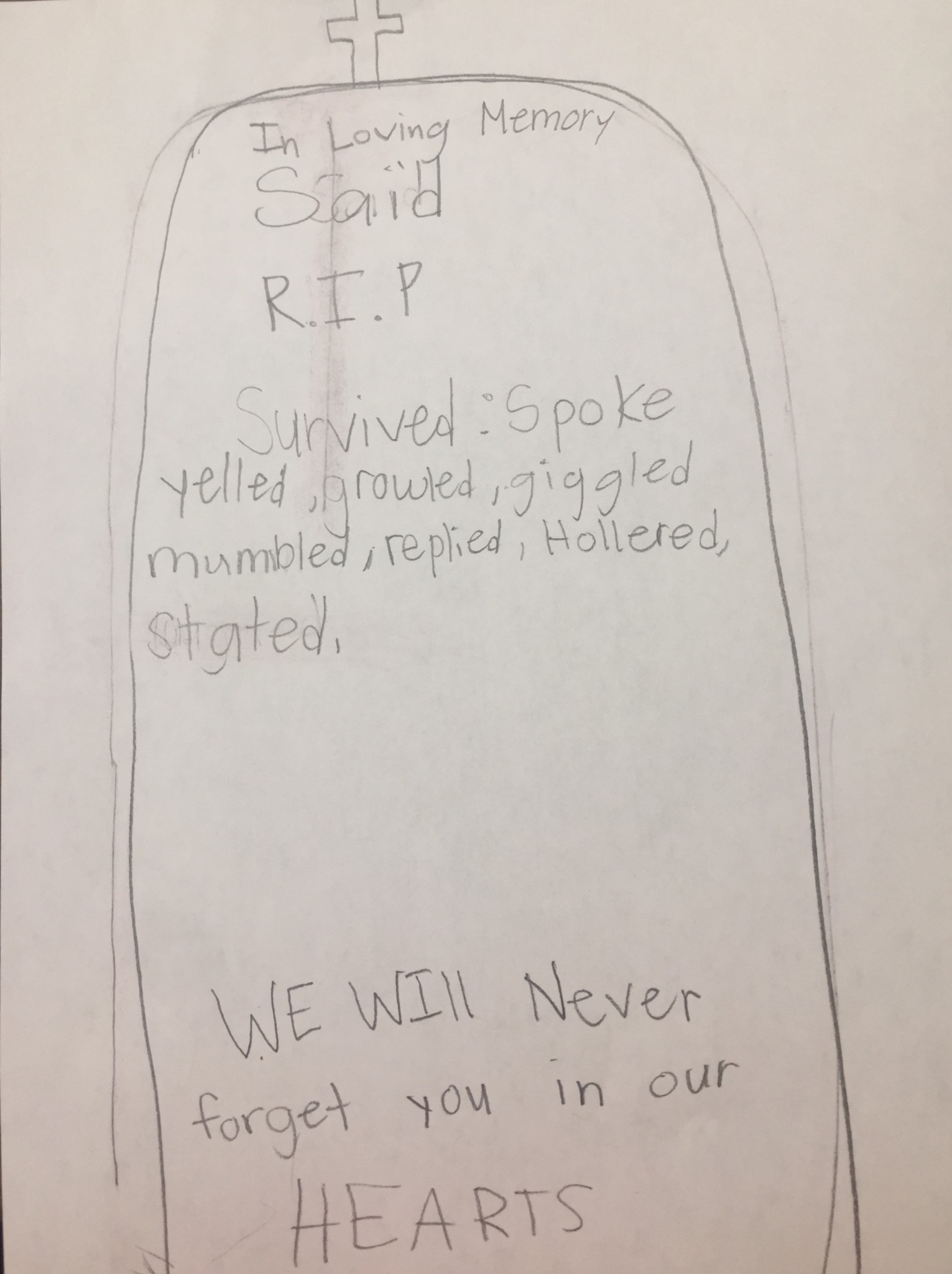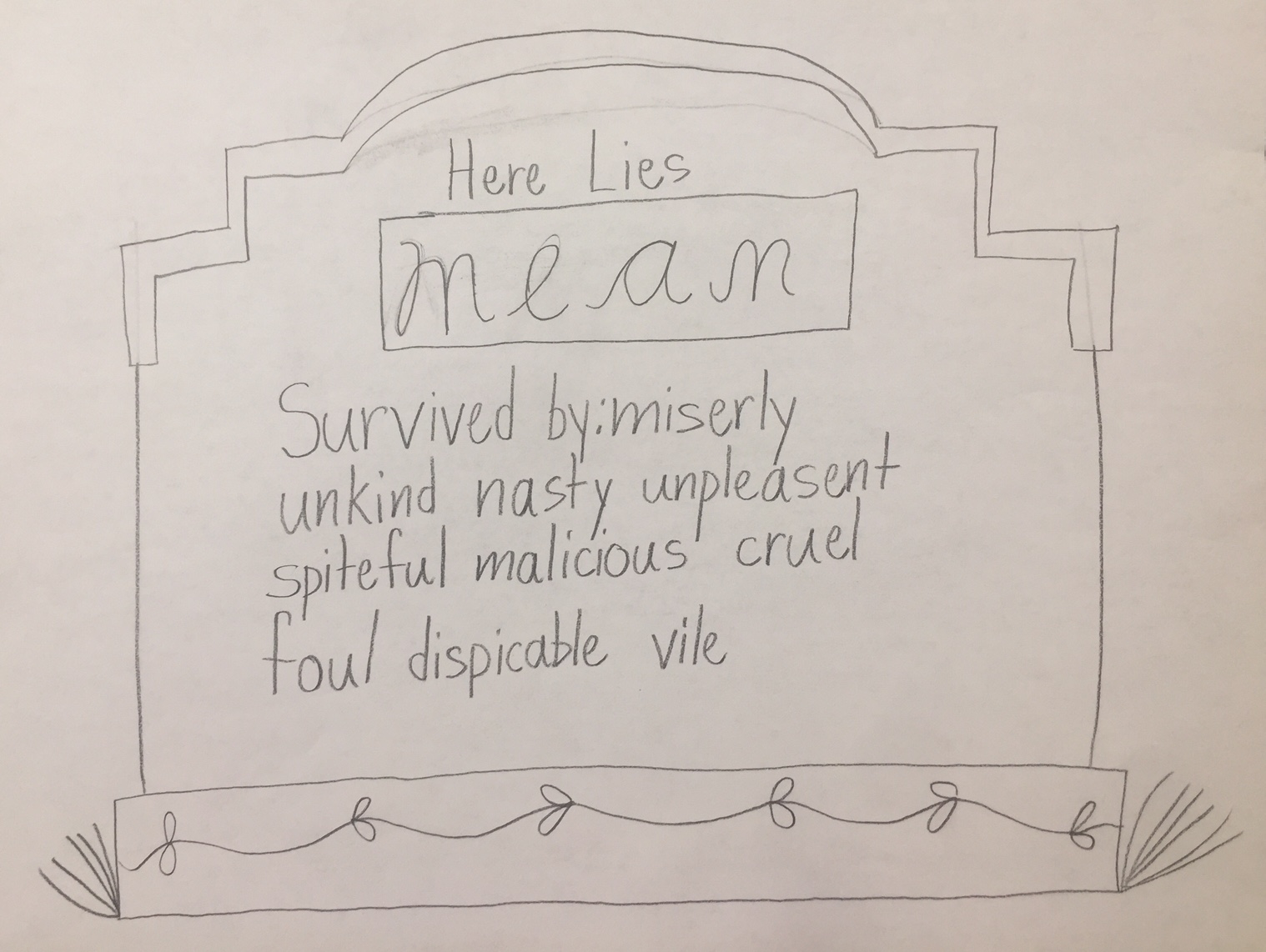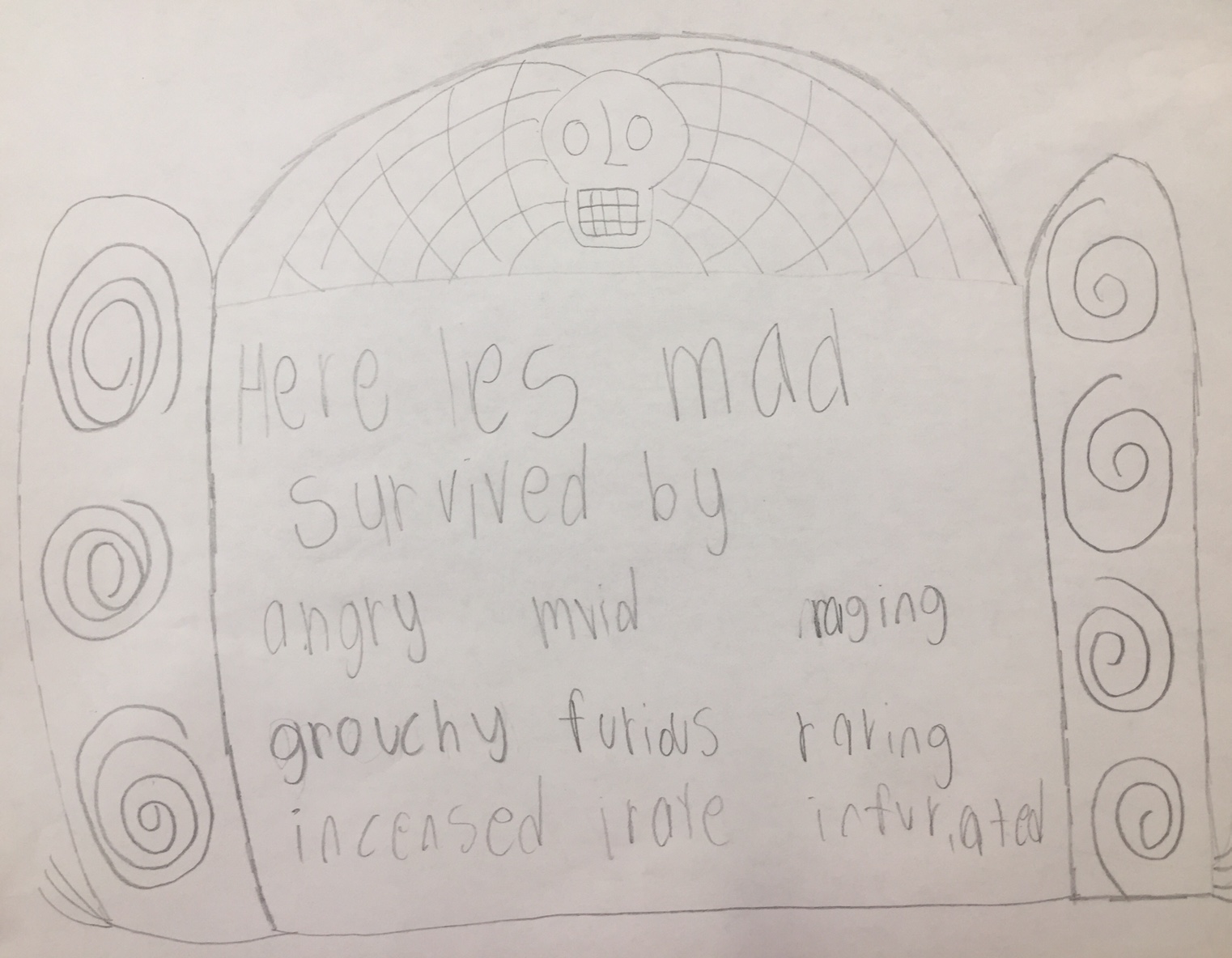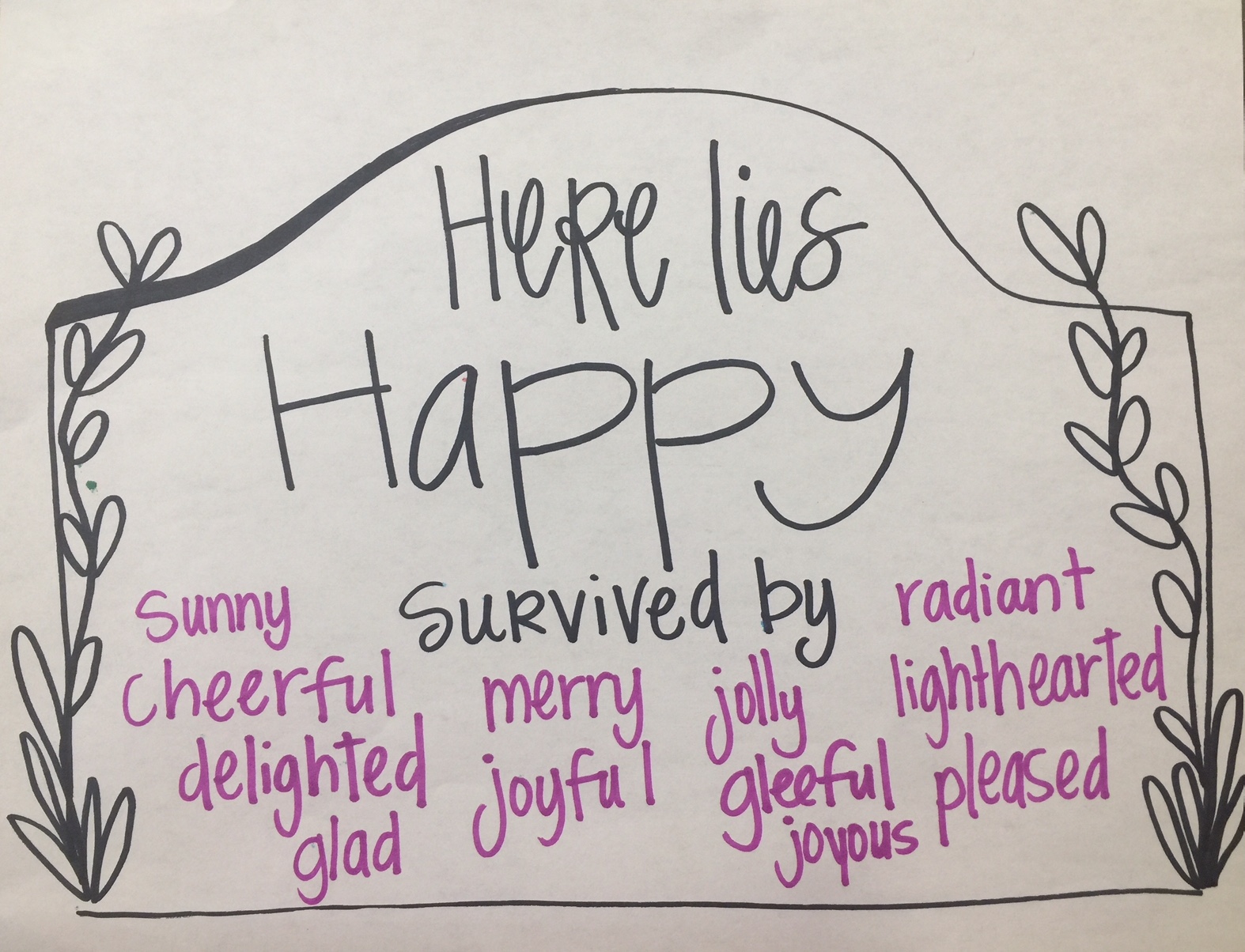3 Fun Ideas to Lay Dead Words to Rest
6 Min Read • Literacy
Here Lies Happy
A dead word is a word in the English language that is overused. If you search the internet, you can find many actual lists of dead words. Some examples of dead words are: happy, sad, mad, said, mean, good, bad, a lot, fun, and very.
Think about when your students submit their first draft of a piece of writing. It is sure to be overloaded with all the “happy and good things the boy or girl did that was a lot of fun!” You could spend hours helping students edit for vivid language, but there is a much better way to get this job done. For starters, having the students be aware of dead words before they start writing can eliminate some steps in the editing process.
Something else you can find plenty of on the internet are ideas for teaching about dead words in the classroom. I spent some of my own time searching and found a lot of ideas for having students work in groups to make lists of these words. Teachers then compile the lists into one big class list. They hang the list in the classroom and have students refer to it throughout the year.
I also found ideas for having students create word graveyards. Some teachers have their students make an individual booklet as a graveyard for dead words. Each page in the booklet has a tombstone on it with an epitaph, such as Here Lies Happy, for the dead word. Other teachers have their students work together to create a mini-poster with a tombstone and epitaph for the dead words. These are hung on the wall mimicking a graveyard. Students refer to this throughout the year.
Actually, Here Lies Happy
I actually love all of these ideas, but almost every blog post or example I found of these activities required printing a worksheet that already had the tombstone drawn on it. The rare alternatives that I found were to have the students draw the tombstone on their paper.
As an arts integration fanatic, I have a severe repulsion to worksheets. I prefer to save paper (and the environment) and have my students create their own work whenever possible. They feel more connected to anything they do themselves, and I always want them to make that connection to their learning. I’ve gotten some pushback on this idea when I suggest it to teachers. Believe it or not, I’ve heard teachers say “My students can’t draw that.” Well, I’m here to tell you: YES, THEY CAN! AND, THEY WANTTO!
However, as I’ve written before, just having students draw something does not make it an art integrated lesson. You have to teach about the elements and principles of art alongside any drawing they do. Honestly, and here is where your happy actually lies, if you teach them some basic visual arts concepts, they can apply these every single time they have to draw something new. All you will have to do is remind them to think about the concepts as they work. Build this into your instruction so that it is seamless, and you will never feel like you are having to do one more thing. Everything you teach them with this dead words lesson can be applied to any other drawing or lettering they do throughout the year. BAM! Using these elements of art gets you in that super wonderful art integrated space!
Here Lies the Best Part
So, how can you build some elements and principles of art into your teaching of dead words? I have 3 fun ideas to help you FINALLY lay those dead words to rest in your classroom.
1- Show photos to understand shape
Spend a few minutes showing photographs of historical tombstones, which can be found easily and readily online. Talk about the details of actual stones. Some have curved lines, some have corners, some have geometric shapes, some have decorative engravings. Help your students notice how the words are centered and spaced out evenly.
2- Talk about using space
Tell students they should use the entire sheet of paper. The edges of the tombstone should come very close to all four edges of the paper, and the shape should be much larger than their hand. Then, help them learn to find the middle of the shape as a guide for spacing out their words. A hint that goes a long way for students when they are hand-lettering is to tell them to think about each letter as a drawing. They aren’t just jotting down words, they are drawing words.
3- Emphasize important words
Give a couple of examples of ways students can emphasize the important words. For starters, students will need to emphasize the dead word that is being laid to rest. They can make that word a little bigger than the other words. They can also draw a box around that word to make it stand out. Changing the color is another way to emphasize the important words. In some of the examples provided here, the students used a color to list the “survived by” words. Finally, changing fonts or styles of lettering can help emphasize certain words as well.
R.I.P Dead Words
For this article, I conducted an experiment. I told my students to draw some tombstones for their dead words without giving them any reminders about the elements and principles of art. Without really giving them any guidance at all, I basically just said, “Go draw this.” Here are some examples of how that turned out.
After they did this activity without any guidance, I went back through the 3 ideas from the post. Turns out, it was fun, and we were finally able to lay those dead words to rest. Here are the products from the same students after I more explicitly, but quickly, taught about how I wanted them to draw. These make a much better dead word graveyard to hang on the wall. After all, if we are going to look at it for the rest of the year, we want it to be visually pleasing, right?
Before I wrap this up, I want to offer a disclaimer. I didn’t just run this experiment on my students for the sake of running an experiment. That would be wasteful of their time. No, I had them compare the two works they created. I used it as a way to teach them to remember to use what they know about the elements and principles of art any time they draw something in any classroom for any reason. They will be much more likely to remember to do this now that they’ve seen the difference for themselves.
So, what do you think? How do you teach dead words? Is it helpful to think of this lesson in terms of art integration? Do you think it takes the engagement and learning to a deeper level? I’d love to hear what you think! Drop a comment below. I’ll keep an eye out for it!











